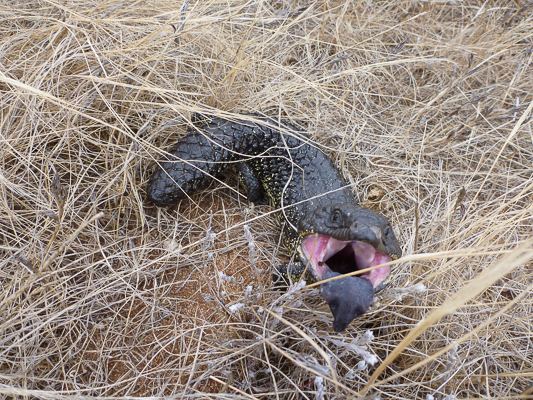 | ||
Blyth island in the sir joseph banks group of islands
The Sir Joseph Banks Group is an archipelago of 21 small islands with a collective land area of 1,275 hectares (3,150 acres) located in Spencer Gulf about 20 kilometres (12 mi) off the eastern coast of the Eyre Peninsula in the Australian state of South Australia. Eighteen of the islands are in the Sir Joseph Banks Group Conservation Park while the surrounding waters are protected by Sir Joseph Banks Group Marine Park. It is considered to be an important seabird breeding site.
Contents
- Blyth island in the sir joseph banks group of islands
- Map of Sir Joseph Banks Group South Australia Australia
- C4 cruising the limestone coast reevesby island sir joseph banks group
- Description
- Islands
- Access
- History
- Flora and fauna
- Little penguin colonies
- Spilsby Island
- Reevesby Island
- Sibsey Island
- Statutory reserves
- Important Bird Area
- References
Map of Sir Joseph Banks Group, South Australia, Australia
C4 cruising the limestone coast reevesby island sir joseph banks group
Description
The islands are low-lying, with the highest point on Spilsby of about 50 metres (160 ft) They consist mainly of a granite base beneath limestone and are usually capped with calcrete or sandy soil. Reevesby and Spilsby are the largest islands in the group. Spilsby Island is privately owned and continues to be grazed by sheep, as well as holding a few holiday cottages.
Islands
The group consists of the following islands:
Access
Visits to the islands are only possible by boat, with the closest mainland access point being the coastal town of Tumby Bay, 22 kilometres (14 mi) to the north-west. Some islands are not open to the general public because of their environmental sensitivity.
History
The islands were named by Matthew Flinders on 23 February 1802 on his voyage of exploration in HMS Investigator. The group is named after Sir Joseph Banks, who was a sponsor of the Investigator voyage. Many islands in the group are named after places in Flinders’ home county of Lincolnshire, England.
Flora and fauna
Most islands are vegetated with low shrubland dominated by nitre bush or African boxthorn. Some support tall shrubland dominated by coastal boobialla or coastal daisybush. Areas of sandy loam may support marsh saltbush. The larger islands retain patches of woodland. Islands previously used for grazing sheep have introduced grasses and burr medick.
As well as the native death adders, tiger snakes, and several species of lizard including goannas, many of the islands have introduced mammals such as feral cats, house mice or chinchilla rabbits. The archipelago has Australian sea lion breeding colonies. Greater stick-nest rats were reintroduced to Reevesby Island in 1990/91.
Little penguin colonies
A holiday-maker visiting the Sir Joseph Banks group in 1923 noted the presence of little penguins, commenting that "On every island there are hundreds of nests,or rather roosts, of the fairy penguins, with their meek faces poking up under the barest shelter." As of 2011, several penguin colonies in the group are believed to be in decline.
Spilsby Island
As of June 2011, the colony of little penguins on Spilsby Island is believed to be in decline. In 1935, the population was described by a visitor: "All around the shores of Spilsby the quaint, pretty little fairy penguins have their burrows. Sitting bolt upright, their short, hair-like plumage dark blue, with white fronts, they look at human beings with eyes which hold no fear, only a mild wonder at the appearance of the intruder. You can walk among them: they do not move, except to follow you with their eyes." In 2006, the Spilsby Island population was estimated at 2000-3000 birds. In 2010 the population was estimated to be less than 100 birds. In 2011, the population was described as 'few'. Landholders and conservation groups report that numbers in Spencer Gulf have crashed since the early 2000s.
Reevesby Island
Little penguins have been recorded on Reevesby Island. In 1907, the colony was mentioned by Douglas Mawson from the Australasian Association for the Advancement of Science: "The cavities in the limestone, which have been hollowed out by the sea, were found to contain a very large number of penguins." In 2009 the population was estimated to be 1,857 breeding birds. The colony is believed to be in decline, based on unpublished data and declining results of pitfall trap surveys.
Sibsey Island
In 1916, three men became marooned on Sibsey Island. They survived for twelve days on a diet of penguins and penguin eggs. In 2004, there were 'few' penguins recorded on Sibsey Island.
Statutory reserves
Eighteen of the islands within the group are in the Sir Joseph Banks Group Conservation Park with the waters surrounding the islands are protected by the Sir Joseph Banks Group Marine Park.
Important Bird Area
The archipelago has been identified by BirdLife International as an Important Bird Area (IBA) known as the Sir Joseph Banks Group Important Bird Area because it supports over 1% of the world populations of white-faced storm petrels (with up to about 180,000 breeding pairs), Cape Barren geese (up to about 1200 individuals), black-faced cormorants (from 3000 to 5000 breeding pairs), and, probably, of Pacific gulls. Other seabirds which breed in the archipelago include little penguins, silver gulls and greater crested terns. Fairy terns and eastern reef egrets have been recorded.
